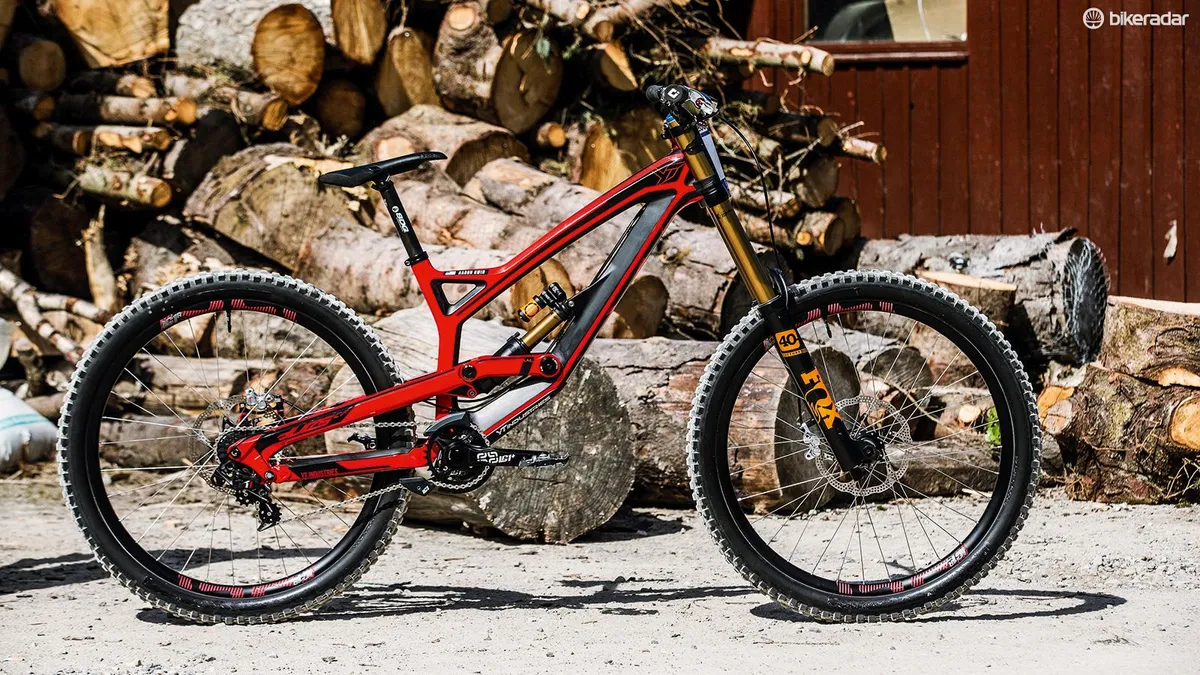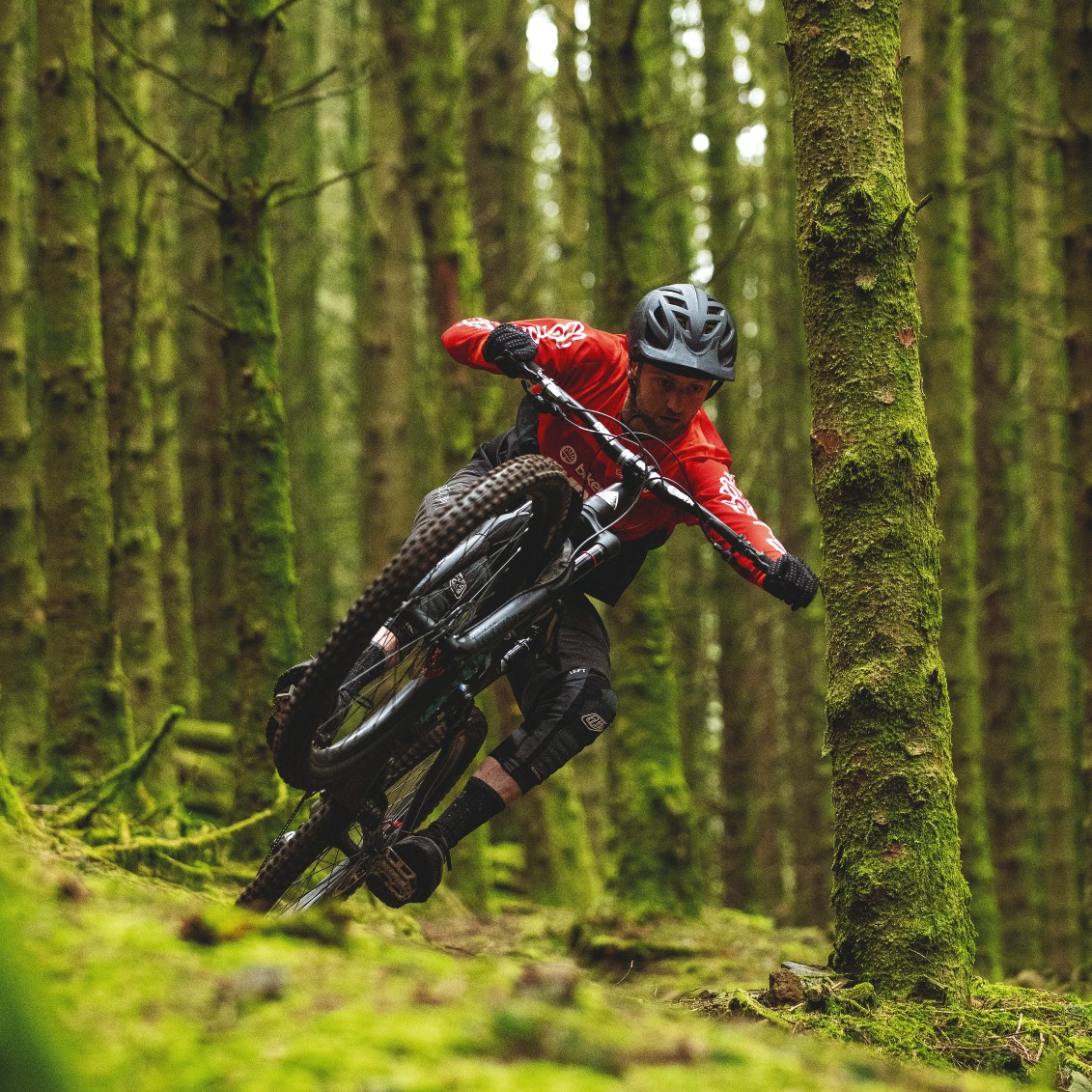YT Industries isn’t a name with a long history in downhill racing, but the German direct-sales brand has hit the World Cup circuit with a bang. Known for offering well designed, top-spec machines at affordable prices, the brand has enjoyed massive success in Europe and have now set its sights across the pond.
- How to adjust the rebound and compression settings on your mountain bike
- Complete guide to bottom brackets
- Aaron Gwin and YT Industries will be going downhill together in 2016
YT first captured attention in the US by sponsoring freerider Cam Zink and has now stepped things up by signing reportedly the biggest pro deal in mountain biking to take on the inimitable Aaron Gwin. And it’s paid off — Gwin won on his first outing aboard the Tues CF in Lourdes, France, and followed that up with a second victory in Leogang, Austria, placing him at the top of the World Cup leaderboard.
Tougher than the rest
It’s testament to the calibre of YT’s downhill bike that Gwin is riding a completely stock large frame, with no geometry changes, special linkages or offset headsets. On appearances, there’s little to separate this bike from any other Tues CF. The differences come in the set-up, particularly the suspension.
The broader hub and narrower cassette allow for a wider spoke angle, making for a stiffer rear wheel
Watching the American ride you notice just how little the suspension is moving. For an average rider, running air pressures this high and compression damping this firm would rattle them to pieces and make it impossible to weight the front wheel for traction. The former motocross racer has the strength to overcome this and the hard platform allows him to remain neutral and carry speed through holes. Some have said that it’s this suspension set-up that allows the three-time World Cup champ to pull out seemingly impossible time gaps over his rivals.
Gwin’s mechanic John Hall says the base tune for the suspension is decided during pre-season testing. Inside the fork and shock, the shim stacks (thin metal washers used to control the flow of oil) will be set up to Aaron’s preferences. Once on the race circuit they may change this slightly, but mostly it’s a case of fine-tuning things to suit individual tracks. They’ll adjust air pressures by a few psi and tweak compression and rebound damping, running things softer and slower in the wet for more grip.
The bike rolls on stock e*thirteen LG1r carbon wheels fitted with their new seven-speed DH hub and cassette. The broader hub and narrower cassette allow for a wider spoke angle, making for a stiffer rear wheel. Both hubs are fitted with metal-cased Japanese bearings to make them spin even sweeter, while the bottom bracket bearings have been changed for ceramic versions.
Against the odds
We didn’t remind John about Gwin snapping his chain in Leogang last year (when he went on to win), but mechanical problems in final runs aren’t unfamiliar to Aaron — a brake failure in 2012 dashed his hopes of a World Champ's title.
This year his stopping power is provided by TRP, the high-end division of Tektro. Gwin is riding a prototype of his signature lever blade, which is flatter to give better finger contact. It’s an upgrade that’s now available to the public.
The paint job is the same as on the production bike — only the small ‘Aaron Gwin’ sticker and flag give away its pilot
Clamped alongside the brake is a SRAM X01 shifter with a custom BlackBox paddle covered in grip tape. It’s a modification John put on for a wet race a few years ago, but Aaron likes the extra grip it offers.
John says the pair of them like to have a bike that looks clean and simple. He’s religious about washing it after practice runs and there’s not a speck of mud on the glossy red and black frame. The paint job is the same as on the production bike — only the small ‘Aaron Gwin’ sticker and flag give away its pilot. Inspecting the bike closely though, you can see some of John’s small touches, like the use of titanium bolts throughout.
Apart from the savagely hard suspension set-up, there’s nothing out of the ordinary about this bike — it’s just a solid, high-performance platform that allows its rider to achieve some extraordinary things.
1. No easy ride

The bike runs on Kashima coated, air-sprung Fox suspension units at both ends — a 40 Float RC2 fork and Float X2 shock. Air pressures are high and the compression damping firm to cope with high-speed impacts.
2. Up front

Gwin uses a custom 790mm Renthal Fatbar Carbon handlebar with a 30mm rise, bolted through a matching Integra direct-mount stem. The stack height will change depending on the track.
At Fort Bill it was set up tall with two spacers below the fork crown to suit the flat-out rocky track. Titanium bolts are fitted to save weight.
3. Crank it up
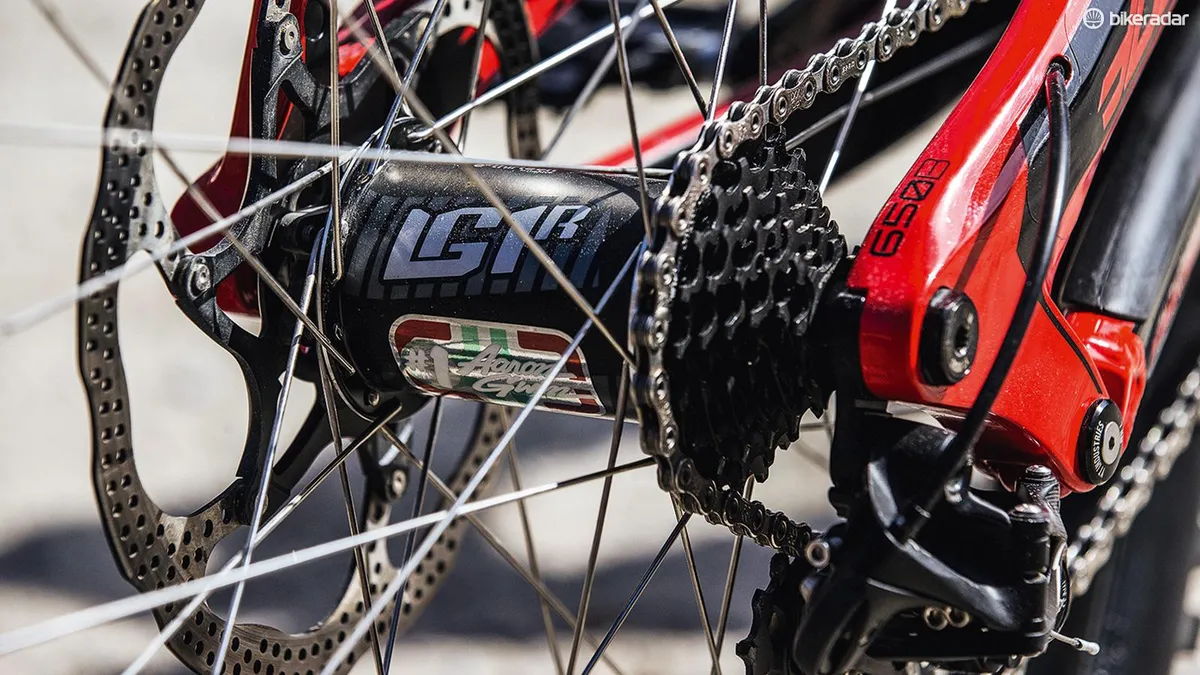
E*thirteen sponsors the YT Mob team and Gwin uses lots of its parts, including the LG1r carbon wheels and massive seven-speed rear hub. Although he uses an X01 shifter and mech, Aaron isn’t sponsored by SRAM.
4. Anchors
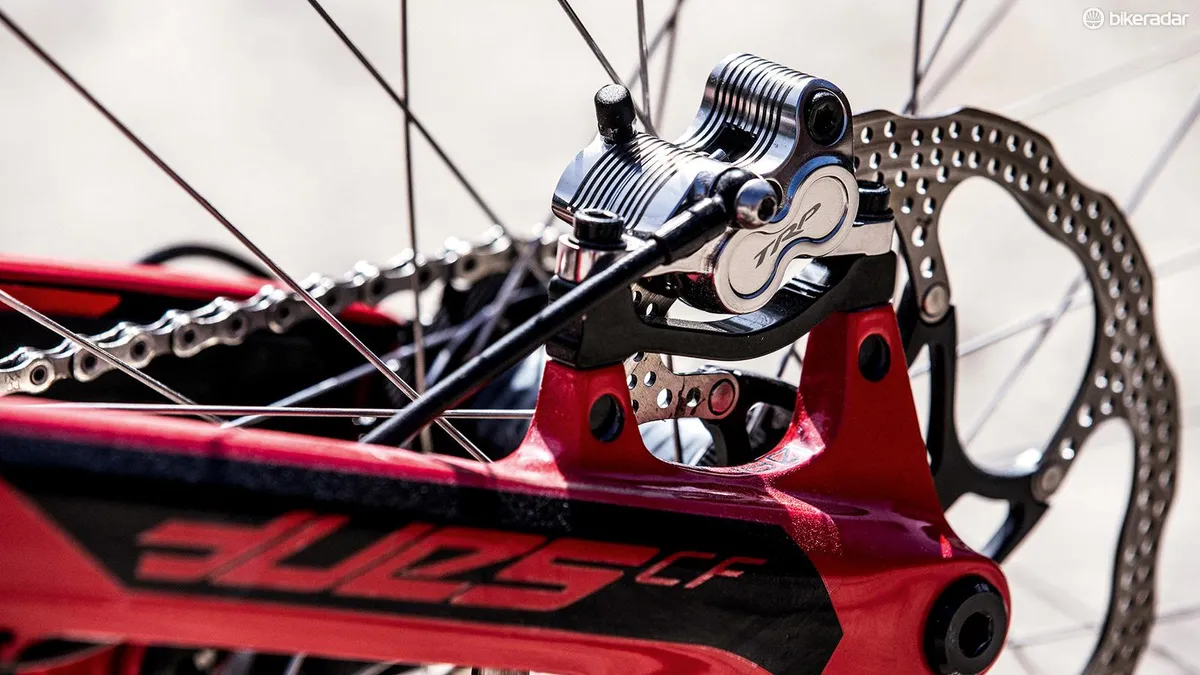
TRP are working closely with Aaron, trying to make the perfect brake for him. He’s running the four-piston Quadiem SL, but with a prototype calliper that is machined to be lighter and offer better cooling.
5. Contact points
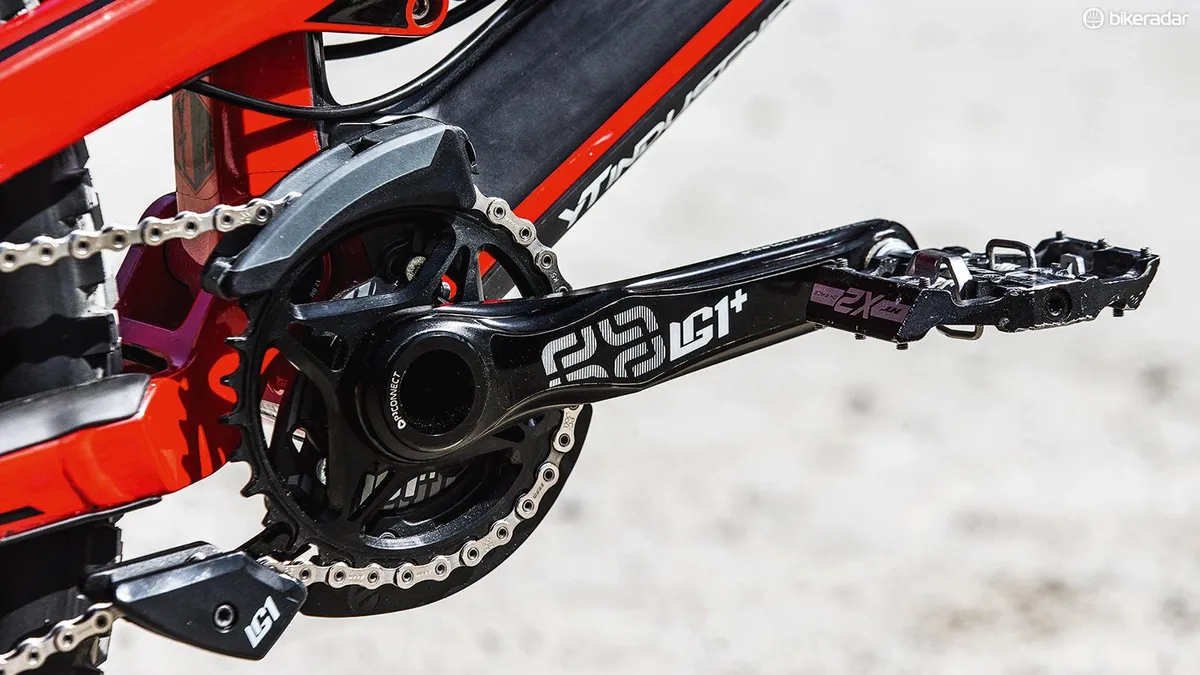
Keeping Gwin attached to the charging horse are HT’s X2 clipless pedals. These combine a mechanism similar to Shimano’s SPD system with a cage and pins more like those found on CrankBros’ Mallet DH pedals.
